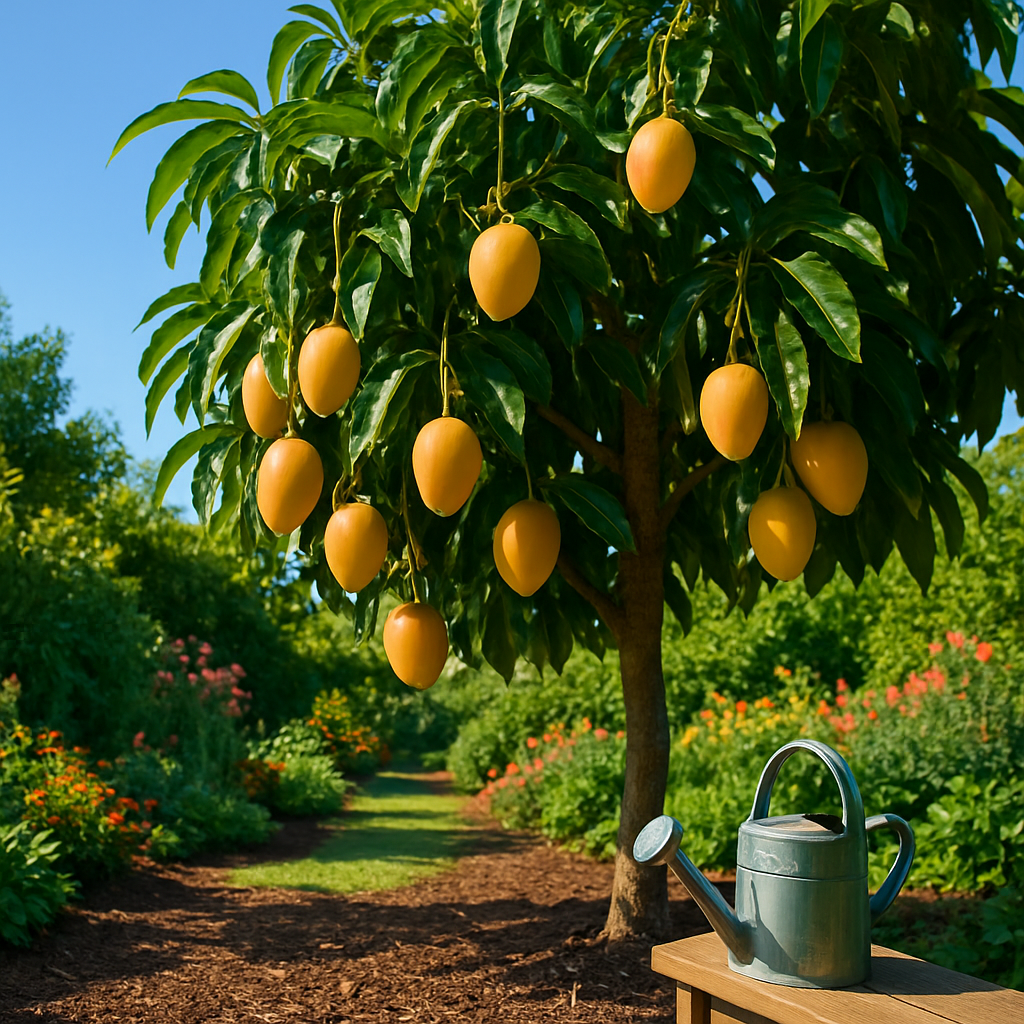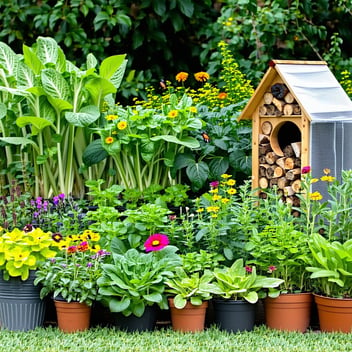Growing Mangoes in Your SEQ Garden: Tips for Juicy Success
1. Introduction
South East Queensland basks under a subtropical sky. Warm, humid summers. Mild winters. Mango trees are quite at home here. Their glossy leaves and succulent fruits are a delight. Growing mangoes in your backyard is deeply satisfying. Every juicy slice tastes of sunlight and care.
2. Choosing the Right Mango Variety
Varieties Suited to Subtropical SEQ Climate
The climate in SEQ favors varieties that resist occasional cooler nights and thrive in humidity. Kensington Pride (also known as Bowen Special), R2E2, Honey Gold, Keitt and Calypso are among those with proven success. These cultivars deliver sweetness, good disease resistance and yield under SEQ conditions.
Grafted vs Seed‑Grown Trees
Trees from seeds may take longer to fruit and may bear fruit unlike the parent. Grafted trees guarantee known fruit quality and produce sooner. For many gardeners, grafted varieties are the safest route to juicy success in manageable time.
3. Optimal Site Conditions
Sunlight, Wind and Frost Protection
Mango trees demand full sunlight — ideally six to eight hours daily. Shade will starve them of energy. Young trees are vulnerable to wind damage. Shelter them from strong winds. Though SEQ rarely threatens with hard frosts, cold snaps can damage blossoms or young fruits. Choose a spot that avoids frost pockets.
Soil Type, Drainage, and pH
Well‑drained soil is non‑negotiable. Mangoes suffer in waterlogged conditions. Loamy or sandy loam soils are ideal. Soil depth matters so roots can anchor and reach nutrients. pH should be roughly between 5.5 and 7.5. Slightly acidic to neutral. Organic matter helps both drainage and fertility.
4. Planting Your Mango Tree
Best Time of Year to Plant in SEQ
Late spring to early summer is prime. Soil is warming. Rainfall tends to pick up. These conditions help young trees establish roots fast. Avoid planting into cold or very dry seasons. If possible, tie planting to the onset of the wet season for natural moisture support.
Proper Planting Technique
Dig a hole twice the width of the root ball. Depth so that the graft union (if grafted) sits above soil level. Backfill with enriched soil (mixing compost or well‑rotted manure). Tap down to remove air pockets. Water thoroughly. Mulch around the base—but keep mulch away from the trunk to prevent rot.
5. Watering, Feeding, and Mulching
Watering Schedule for Young vs Mature Trees
Young mango trees need consistent moisture. Water deeply and regularly during establishment. Too dry and they’ll drop leaves; too wet and roots suffer. As trees mature, they become more drought‑tolerant but still benefit from watering during fruit set and dry spells.
Fertilizer Types and Timing
Balanced, slow‑release fertilizers work well. Early growth stages benefit from higher nitrogen. As flowering begins, shift toward fertilizers higher in potassium and phosphorus to encourage blossoms and fruit development. Micronutrients like zinc or iron are sometimes needed in local soils.
Mulching to Conserve Moisture
Organic mulches—wood chips, compost, leaf litter—help regulate soil temperature, suppress weeds, and retain moisture. Lay mulch several centimeters thick around drip line. Refresh periodically. Maintain a mulch‑free zone just around the trunk flare to avoid fungal issues.
6. Pruning and Shaping for Better Fruit
When to Prune
Pruning is best done during the cooler, dormant period to avoid stressing tree. Remove dead or diseased wood, crossing branches or those causing poor airflow. After fruit harvest, light pruning helps shape the tree and remove overly heavy limbs.
How to Shape for Airflow and Fruit Load
Open canopy designs allow sunlight into inner branches, reducing disease risk and helping fruit ripen evenly. Maintain a balanced scaffold structure. Trim back vigorous upright shoots that steal energy. Support heavy fruit limbs with props if needed.
7. Managing Pests, Diseases, and Environmental Challenges
Common Pests in SEQ and Organic Control
Fruit flies are a perennial threat. Use baiting or bagging when fruits are swelling. Scale insects, mealybugs—watch leaves and stems carefully. Use horticultural oils, beneficial insects, or low‑toxicity sprays as needed.
Diseases to Watch For and Prevention
Anthracnose attacks flowers and young fruit when humid. Keep canopy open; remove fallen leaves. Powdery mildew can appear under certain humid conditions. Ensure good air circulation. Clean tools to avoid disease spread.
Dealing With Extreme Weather
SEQ summers may bring heatwaves or heavy storms. Provision for sheltering young trees. Use shade cloth in extreme sun. Support trees against wind. Ensure soil drains well to avoid waterlogging during heavy rains.
8. Harvesting and Post‑Harvest Care
Signs of Ripeness
Color shift from green to yellow/orange (depending on variety). Sweet fragrance at stem. When fruit gives slightly under pressure — ripe! If unsure, sample one fruit to check flavor.
Harvest Methods
Use clean pruning shears or gentle twist. Avoid pulling fruit, which can damage the fruit or branch. Handle carefully to avoid bruises.
Storage and Handling
Keep harvested mangoes at room temperature until fully fragrant. Can store in refrigerator to prolong life once ripe. Handle gently — mangoes bruise easily, and bruising accelerates spoilage.
9. Tips for Small Gardens or Container Growing
Dwarf or Compact Varieties
Some varieties stay more compact. Using grafted trees on dwarfing rootstocks helps control size. Perfect for patios or small backyards.
Container Requirements and Care
Choose large pots with good drainage. Use rich potting mix with compost. Containers dry out faster—water regularly but avoid waterlogging. Move container to protect from cold or storms.
10. Common Mistakes to Avoid & Troubleshooting
Overwatering, Poor Drainage
Standing water or soggy soil kills roots. Always ensure drainage.
Late Flowering and Fruit Drop
Causes include irregular watering, nutrient imbalances, or stress from weather. Keep conditions consistent.
Nutrient Deficiencies
Yellow leaves, poor growth or small fruit may point to deficiencies in micronutrients. Soil test. Amend as needed.
With attention to variety selection, placement, care, pruning, and protecting your mango tree from pests and climate stressors, your SEQ garden can yield juicy mangoes that taste of golden afternoons and hard work.




